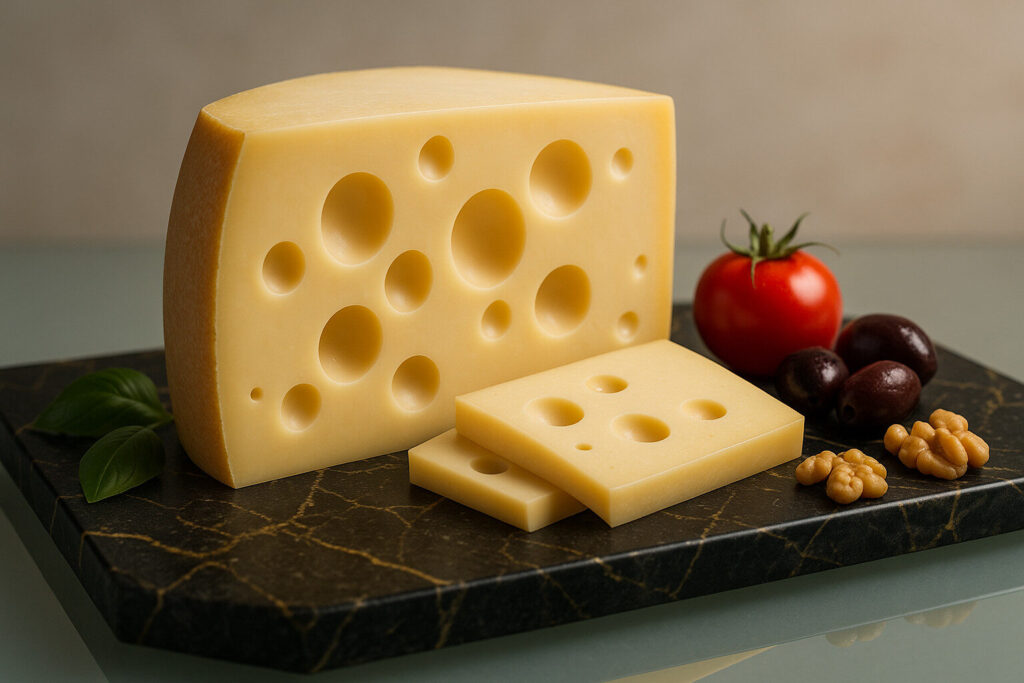Switzerland Cheese
Definition and Scope
Swiss cheese refers to a category of cheeses originating from Switzerland, characterized by their distinctive holes or “eyes.” These cheeses are typically made from cow’s milk and undergo a specific fermentation process. The term encompasses varieties like Emmental and Gruyère, which share similar production methods.
This category is defined by its firm texture and nutty, slightly sweet flavor profile. Swiss cheeses are often aged for several months to develop their complex characteristics. They hold protected designation of origin status in Europe, ensuring traditional production methods are maintained.
Production Process
Swiss cheese production begins with raw or pasteurized cow’s milk heated in copper vats. Specific bacterial cultures, including Propionibacterium freudenreichii, are added to initiate fermentation. The curds are cut, heated, and pressed into large wheels for aging.
During the aging period, which lasts from three to twelve months, carbon dioxide forms and creates the characteristic holes. The cheeses are regularly turned and brushed with brine solutions. This careful maturation process develops the cheese’s distinctive flavor and texture.
Sensory Profile
Swiss cheeses present a pale yellow interior with evenly distributed holes of varying sizes. The texture ranges from semi-firm to hard, becoming more crystalline with extended aging. The surface typically features a natural rind that may be brushed or washed during maturation.
Flavor profiles include nutty, buttery notes with a subtle sweetness and minimal saltiness. Aged varieties develop more complex, robust flavors with hints of fruit and earth. The aroma is generally mild and milky, becoming more pronounced in longer-aged specimens.
Culinary Applications
Swiss cheeses are versatile in cooking due to their excellent melting properties. They are fundamental in traditional dishes like fondue, raclette, and croque-monsieur. Their flavor complements both simple sandwiches and complex baked preparations.
These cheeses pair well with white wines, fruits, and crusty breads. They are often grated over pasta dishes or incorporated into sauces. Their structural integrity makes them suitable for both cold presentations and heated applications.
Regional Variations
Emmentaler from the Emme Valley features large, cherry-sized holes and a mild, nutty flavor. It undergoes a minimum four-month aging period and is protected by AOC designation. This cheese represents the classic hole-filled Swiss cheese image.
Gruyère from the Fribourg region has smaller holes and a denser, creamier texture. It ages for five months minimum and develops more complex, earthy flavors. Appenzeller incorporates herbal brine washes that create its distinctive spicy character.



